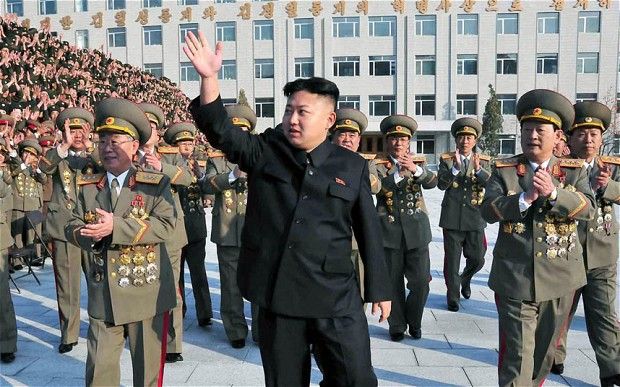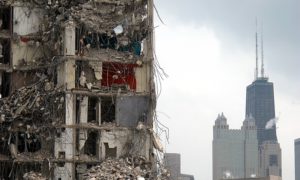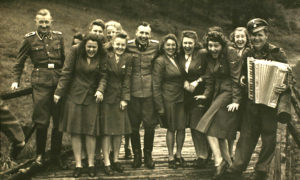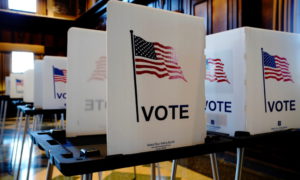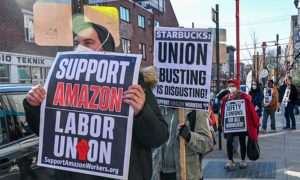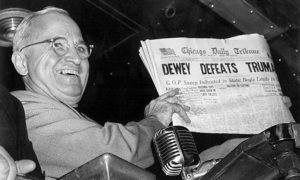When isn’t North Korea in the news? Whether it’s cutting its military hotline to South Korea in 2013, hacking Sony’s network in 2014, or just today when we found out Kim Jong-un is executing his own people by the dozens, North Korea is everywhere. Yet, while we all watch it, we are all mostly unsure if North Korea is a true threat to the American people.
In order to fully understand the controversy, we must learn and understand the historical relationship between North Korea, South Korea, and the United States. We will attempt to separate fact from fiction about a centuries-old struggle for land in the hope of finding the answer to the question the world has been asking for too long: Will North Korea declares war on South Korea? And if so, what is the United States’ role in all of this?
In a questionnaire I spam emailed throughout my university campus, I asked, “If North Korea were without nuclear weapons, what threat do they pose right now?” Over half of them said “none.” I saw a reference to North Korea’s annulment of the 1953 Korean war armistice back in 2013, but their knowledge didn’t stem past what we’ve all read in the news. The overall response was similar to how celebrities look at photographers on the red carpet–annoying and unimportant. It would seem that the situation in Korea is pretty irrelevant in the minds of my peers. There was practically no understanding of the situation beyond recent years–alarming because the long, historical past of the Korean peninsula has shaped today’s policies, long before its relatively recent North/South split.
The Early History of Korea

King Taejo was the founder and first ruler of the Joseon Dynasty (photo from: wikipedia.org)
North Korea lies on the borders of China and Russia on a peninsula it shares with South Korea. This peninsula has been known as the Korean Peninsula for the majority of its history. The Joseon Dynasty was in power of both Koreas for nearly two hundred years starting in July 1392 after the collapse of the Mongolian Empire.
During the Joseon Dynasty, much of Korea’s rich history and many of its modern traditions were established. In the 14th century, King Sejong the Great created the native Korean alphabet, known as Hangul in present-day South Korea and Chosongul in the North. It is, to this day, still the script used by both countries. This dynasty also saw the powerful rise of Confucianism, which persists today. This dynasty was dubbed the “Hermit dynasty” by Westerners for its isolationist policies–many of which are still exhibited by North Korea.
The Joseon Dynasty thrived in Korea and unified much of the peninsula. However, during the late 19th Century, Korea became the object of Japanese colonial designs. In 1910, Korea was officially annexed by Japan and remained a colony until the end of the Second World War. In 1945, the United States and Russia split Korea at the 38th parallel; Russia occupied the northern half and the United States the southern half. This was done because the two sides refused to negotiate for Korean independence. This led to a Communist power in the north and a Republic in the south. Due to Cold War political machinations, in 1948, two very politically different states were formed. The north became a single-party state with a centrally-planned industrial economy known as North Korea, and the south became a multiparty state with a capitalist economy known as South Korea. Two governments have long been at ideological odds.
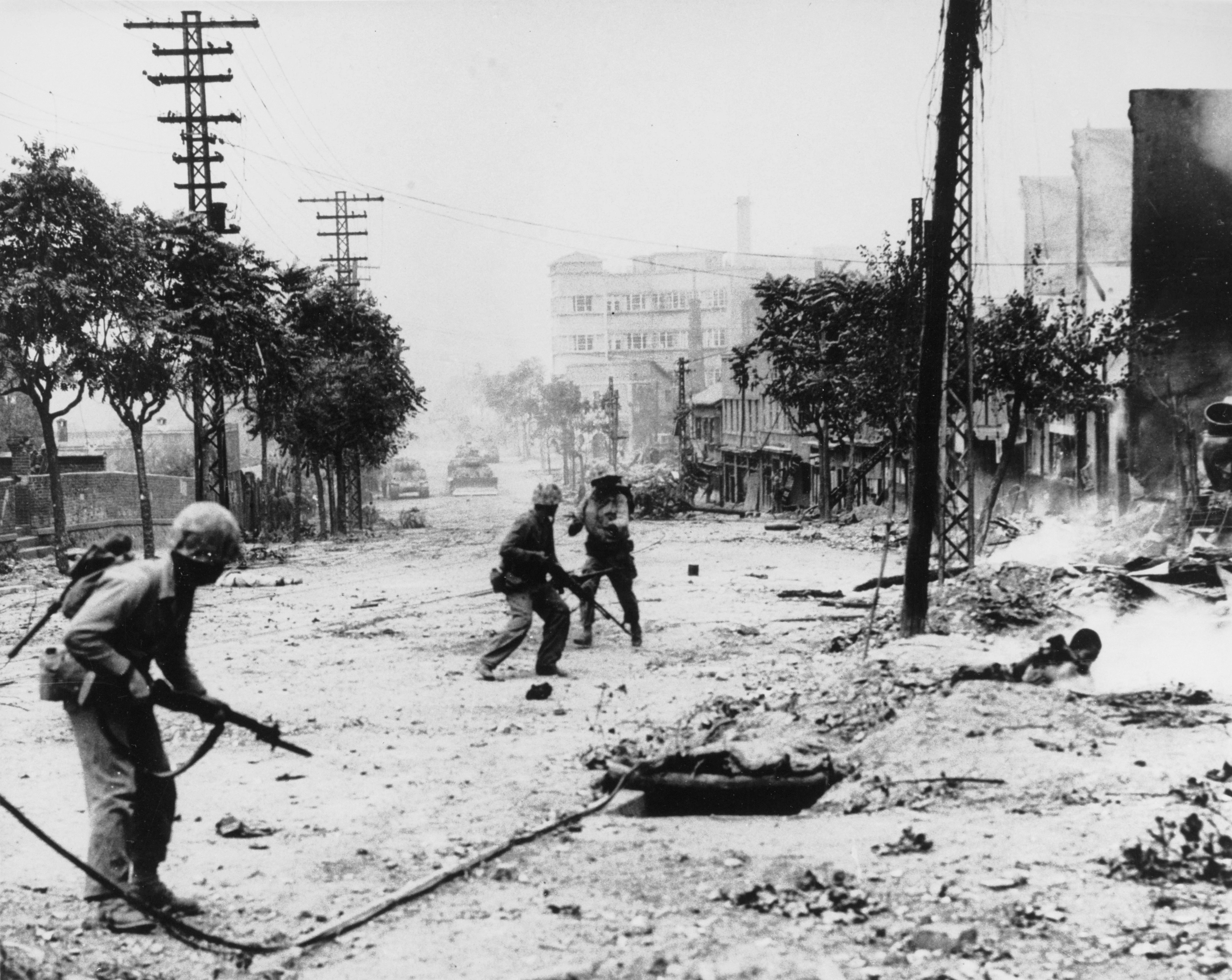
US soldiers fighting North Korean troops during the Korean War (photo from wikipedia.org)
In 1950, only two years after the official creation of two separate states, North Korea invaded the South; it charged the fronts. The war efforts for North Korea were fueled by the Soviets while the South’s arsenal was bolstered by the United States. According to the majority of sources, more than one million people died and the war effectively destroyed most major cities. The war never ended with an official Peace Treaty–instead, an Armistice Agreement was signed to create a cease-fire.
There is much debate about the exact motivations for the war. However, a closer look should be taken at how the people of North Korea viewed the conflict because it is one of the primary reasons we are still hearing about them in today’s news.
The Korean War, as it is referred to by most historians, is not considered just the “Korean War” by the people of North Korea. Harry S. Truman labeled the conflict as a “police action.” Many others in the Anglophone world have called it “The Forgotten War”. However, to the people of North Korea, the war is far from “forgotten.” To them, this war, which is not over, is known as the “Fatherland Liberation War,” which speaks for itself. Put simply, the people of North Korea feel that their land is not just North Korea, but instead that the entire peninsula ought to be united under one governing body–their own.
Present-day North Korea
Since the war, North Korea has felt that the United States and the United Nations are responsible for the division of the Korean peninsula. Korea has had centuries of hardship and hostility and the North Korean government feels they have the rightful duty to take South Korea back and reunite all Koreans under a single banner.

Kim Il-Sung, the first North Korea dictator. (photo courtesy of wikipedia.org)
After the partition, Kim Il-Sung returned to North Korea from China after 26 years in exile. He was appointed the head of the Provisional People’s Committee. However, he was not yet the leader of the Communist Party, whose headquarters were still in Seoul and occupied by the US. Originally, in 1948, the United Nations called for all Korean elections to be sponsored by the United Nations. Kim Il-Sung convinced the Soviet Union to not allow the United Nations into North Korean territory. As a result, one month after South Korea was granted independence under the name “Republic of Korea”, the Democratic People’s Republic of Korea was formed with Kim Il-Sung as the front-man. One month after the proclamation, the Soviet Union declared Kim Il-Sung and the DPRK the only lawful government on the peninsula.
With that, the Communist Party took full control of North Korea. The Communists merged with the New People’s Party to form the Worker’s Party of North Korea, of which Kim Il-Sung was the vice-chairman. In 1949, they merged with their Southern counterpart to form the Worker’s Party of Korea, and Kim Il-Sung was named the party chair. Since the creation of a strong central party, all manufacturing, finance, and internal & external affairs have been under state control. Kim Il-Sung led the fight during the Korean War, which originally started out with the two sides taking each other’s capital cities followed by a bloody stalemate for the next two years before each side regained their capital.
Immediately after the end of combat, many officials in North Korea who were connected to the South or anti-Kim movements were either executed or imprisoned. This even included Party vice-chair and head of foreign affairs Pak Hon-Yong, who was blamed for the failure of the South not to join the North’s efforts. The public showcase surrounding the elimination of these officials was the first spark of fear put into the North Korean citizenry and by 1961 all public opposition to Kim Il-Sung was quashed.
Not until 1972 did the two Koreas have any official contact. When they finally did have their first summit meeting, there were only cautious discussions and the were characterized by overt hostility. Shortly after this, Saigon fell and Kim Il-Sung felt that US had shown weakness in the region; he wanted to start a new war in order to reunite the peninsula. However, despite public support of the idea, Mao Ze Dung, the Chinese strongman, refused to provide Kim Il-Sung with the aid needed to attack South Korea because China had recently re-established diplomatic relations with the United States.

Kim Jong-Il, North Korea’s second dictator (photo courtesy of globalsecurity.org)
In 1980, Kim Jong-Il, son of Kim Il-Sung, was nominated as his father’s replacement. Tension grew between North Korea and China in 1988 when the Chinese attended the Olympics in South Korea. The flames were fanned in 1990 when China recognized both North and South Korea as legitimate governments on the peninsula. The collapse of the Soviet Union in 1991 sent the DPRK’s economy into a downward spiral since it relied so heavily on aid from the USSR. Kim Jong-Il took the reigns of a struggling country in 1994 after his father’s death.
With the collapse of the Soviet Union and the elimination of Chinese aid, Kim Jong-Il formed his own style of leadership which turned the DPRK into the North Korea we are familiar with today. He adopted “Songgun” as his ideology, which translates as “the army first.” This changed the North Korean government from being a central Communist Party into a military dictatorship. What Kim Jong-Il referred to as “The Korean People’s Army” would dictate all policy. Kim Jong-Il made attempts to help his country and received millions of dollars in aid from places like the USA, Japan, China, and the United Nations–however, the DPRK maintained a hostile stance toward each country.
In 2005, North Korea made the inflammatory claim that it was a nuclear-armed state. It wasn’t until one year later that they announced they had effectively detonated a nuclear device underground, which was confirmed by South Korean intelligence. Four years later, the North Koreans escalated tension by sinking a South Korean naval vessel with a torpedo.
The North Korean people live a life of complete isolation from the rest of the world. In order to get a better sense of their cloistered lifestyle, I recommend watching the documentary Undercover In North Korea by National Geographic. You can read about it here or watch it below. The film was produced in 2007 but the facts and fears are still very much alive today.
From this documentary, one can really get a sense of the isolation North Korea has imposed upon its people and the manipulation that has been used since the beginning of Communist leadership. One quote that sums up North Korean lives and beliefs comes from Lisa Ling, a lead correspondent for the documentary, at the very end of the film,
Each time a patient regained their sight, we were amazed to see them direct their gratefulness to the dear leader. Despite the hardships, he receives credit for everything that happens here. As I watched hundreds of people do and say virtually the same thing over… and over… and over again… I wondered which people had genuine faith, and which were acting out of fear? And finally, it hit me… Here, after generations of absolute rule and complete indoctrination, there may not be a difference between true belief and true fear…. North Korea is a place ruled by an absolute dictator, who now posseses nuclear weapons. It’s no longer possible to regard North Korea as an isolated anomaly. What happens here in the “hermit kingdom” can directly touch everyone in the world.
In December 2011, approximately a year after the sinking of the South Korean naval vessel, Kim Jong-Il died and was succeeded by his son Kim Jong-Un. In April 2012, Kim Jong-Un launched Kwangmyŏngsŏng-3, which they claimed was launched for weather forecasting, but was widely regarded by the West to be a thinly-veiled ballistic missile test. Early 2013 saw marine nuclear tests, despite the United Nations and international law prohibiting such things. Almost a month after the nuclear testing, Kim Jong-Un announced the annulment of the 1953 Korean War armistice (for the sixth time) and Pyongyang has shut down their key military hotline with South Korea. At the end of 2014, North Korea hacked Sony to prevent the release of The Interview–which depicts their leader in a less-than-flattering manner.
North Korea’s True Threat to the American People

Kim Jung-Un, North Korea’s current dictator. (photo courtesy of globalsecurity.com)
In such isolation, we may know very little about the activities of the DPRK, but we can infer so much about North Korea through examination of its rich history. One thing is certain, when it comes to the Korean peninsula, they want to revert to as it was until 1910 when Japan took control–a hermit kingdom. Each of the Kims has been less and less patient. Kim Il-Sung waited almost twenty years to think of going after South Korea again and made the correct judgement call that he couldn’t do it alone. After the fall of the Soviets, Kim Jong-Il turned up the heat by turning the entire government of North Korea into a military dictatorship. Once he did that, until the day he died, he was testing and preparing weapons and was very vocal about his dislikes for the rest of the world. We also know that he isolated his entire country from the rest of the world, a practice that continues today. Kim Jong-Un has been, by far, the most active in such a short time, actively preparing for war and has hazing South Korea since his first day.
Photo used by USA during the first draft. (photo courtesy of uua.org)
North Korea feels the division of the Korea peninsula should have never happened and, had history run its course “properly,” that they would be united under the North Korean government. The majority of North Korean people have lived a life where the leader of North Korea is not only their leader, but their deity. This means that there are probably very few people in North Korea that know anything different. North Korea should not be taken as lightly as it currently is by the American public. These people, since 1950, have wanted to invade and control South Korea as well as destroy the “imperialistic” United States of America. Everyday, North Korea is making more and more statements to the world that they mean business, yet some reporters have stated that North Korea is “nothing to worry too much about” for America because of our size and allies. Despite the validity behind the fact we are a world super power, we are unsure of the capabilities of North Korea and their radical tyrant. If they possess nuclear weaponry, we could be looking at the outbreak of World War III at any moment. North Korea believes they have had over 100 years of their history stolen and blame the United States for everything that has happened. Soon, burning a draft card might not be something only grandpa thought about doing, but it might just be something every young millennial contemplates.

